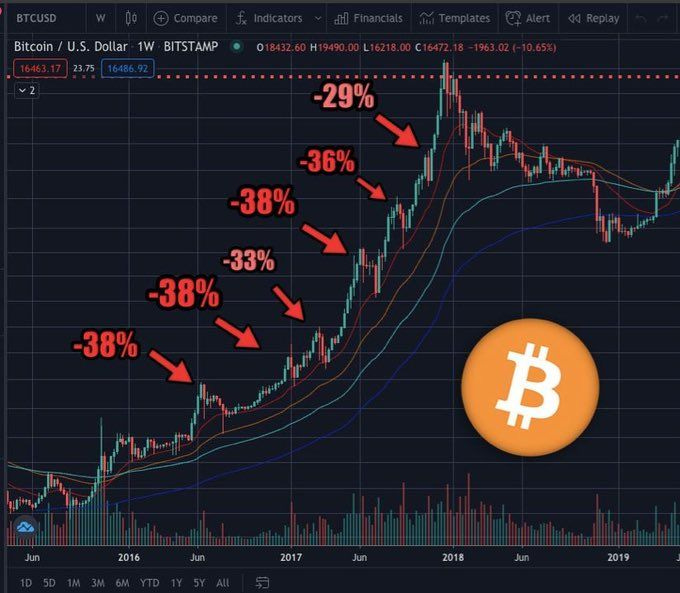crack-up boom
Friday May 3rd, 2024 - Issue # 70
(Any views expressed below are the personal views of the author and should not form the basis for making investment decisions, nor be construed as a recommendation or advice to engage in investment transactions.)
"The crack-up boom is the breakdown of the currency system because of a continuous increase in the quantity of money and credit not warranted by corresponding increases in the quantity of goods. The characteristic feature of the crack-up boom is that the rise in prices is general and no longer confined to individual groups of goods... The whole monetary system breaks down under the pressure of the money-printing frenzy; the quantity of money increases more rapidly than its purchasing power. It is a situation in which people realize that prices will continue to rise and that therefore money will continue to lose its purchasing power. Faced with the choice of holding money that is continually depreciating in value or disposing of it in exchange for real goods, they will quickly dispose of money in exchange for any goods available, thus accelerating the rise in prices. Such a final breakdown often comes suddenly and unexpectedly, even after a period of apparent stabilization." - Ludwig von Mises
This week, the spotlight intensifies on the global financial chessboard, revealing a scenario that is reminiscent of the "Kobayashi Maru"—a fictional no-win test from Star Trek. Back then, it was Captain Kirk, today it is Fed Chair Jerome Powell and a plethora of other global central banks who find themselves in a similar bind.
I’ve actually never watched Star Trek before but I heard a reference on a podcast the other week and thought it might fit well in this week's note, especially considering it was a pretty historic FOMC week. I guess every time Powell speaks these days it’s historic in some ways.
I think Powell’s presser can be summed up in only a handful of carefully chosen words that he used while answering a question about rising inflation and slower growth…“I don’t see the stag or the flation.” Nice.
Powell's seemingly nonchalant dismissal of "stagflation"—a term that conjures up the nightmare of the 1970s, where slow growth and high inflation plagued the economy—might strike some as overly optimistic or perhaps strategically evasive. Memories of Powell and Yellen proclaiming that the soaring inflation numbers of 2021-2022 were just “transitory” are still fresh in our minds.
While we’re all waiting for rate cuts, Powell continued to beat the drum that they are simply not done and “we are fully committed to returning inflation to our 2 percent goal.” That line has been burned into all of our brains by now — there must be at least a few groups of Patagonia vest wearing finance bros on Wall Street and Bay Street that have made a drinking game of it by now.
The press conference was overall surprisingly dovish, mostly because of unexpected new information about the Fed’s balance sheet — while it was confusing at first, it only made sense that it was Powell's speech on the loosening of financial conditions.
QT Taper = QE
As the Federal Reserve tweaks its monetary policy toolkit, the nuances of these adjustments can have profound implications for the financial markets. This week, the Fed's announcement to scale back its Quantitative Tightening (QT) efforts—from a monthly reduction of $95 billion to $60 billion—signals a subtler form of easing that could act as a catalyst for risk assets.
The decision to taper QT at a slower rate effectively translates to the Fed injecting additional liquidity into the financial system. By reducing the runoff rate to $60 billion per month, the Fed is not merely tweaking numbers; it is adding $35 billion per month back into the economy. This adjustment comes on top of the already stimulative effects of high interest rates, which compel the Fed and the U.S. Treasury to make substantial interest payments on reserve balances and U.S. Treasury debt—payments that disproportionately benefit wealthier entities who have trillions chilling in high-interest accounts raking in that sweet, risk-free money.
It appears that the “Fed put” is still on.
Okay, now for some good bitcoin stuff.
The halving just happened and BlackRock is attracting sovereign wealth funds to Bitcoin. All the while, investors are getting shaken out early in a bull market after a very normal 20% decline in price.
Jack Dorsey’s Block, smashed earnings and announced that the company in April began using 10% of its monthly bitcoin-related gross profit to buy additional bitcoin, with plans to do this each month for the remainder of 2024. And…you’re still wondering if you should wait for a dip.
He even open-sourced his company’s strategy for adding bitcoin to their balance sheet so that others can follow suit…
The second best Michael in bitcoin ;) had his annual Bitcoin for Corporation conference this week. Click into the tweet below to watch - it made me buy even more BTC this week.
Have a nice weekend and stay bullish my friends.







